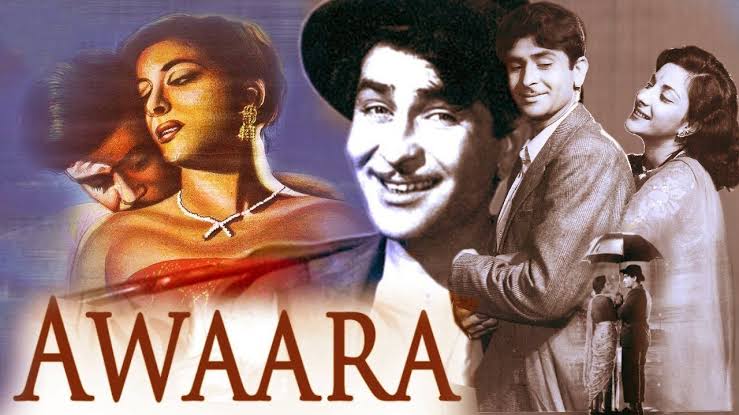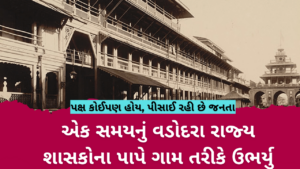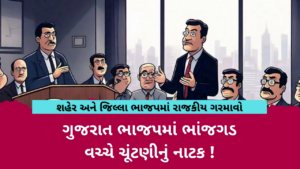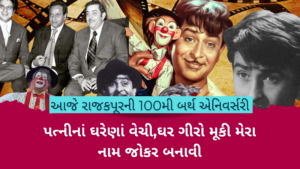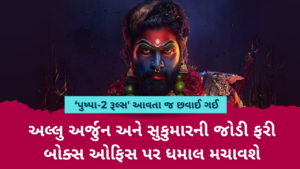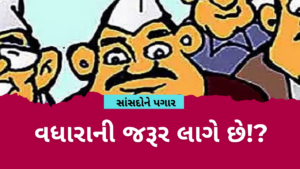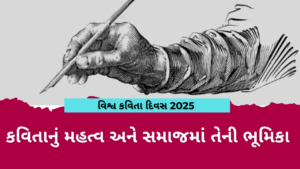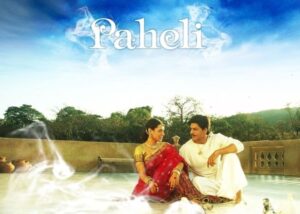– A review by Shivani Gadre
‘Awaara’ stands as a timeless Bollywood classic, hitting the screens in 1951. The film, both directed and produced by Raj Kapoor, features him in the leading role, sharing the limelight with talented co-stars Nargis, Leela Chitnis, and Prithviraj Kapoor. It has earned a well-deserved reputation as one of the greatest Indian films ever made, admired for its enduring narrative, unforgettable music, and compelling performances.
Social injustice, prejudices, poverty and the battle between nature and nurture
Awaara (1951) has many layers, unfolding through an almost 3-hour-long narrative. This film basically revolves around the theme of nature vs. nurture. Whether Raj will act according to his nature or the way he was nurtured under Jagga Daku. Other supplemental threads of the narrative are intricately woven into this. For instance, due to social injustice, Raj’s mother was estranged when she was pregnant, and the inevitable poverty in life led Raj to make a choice between an honest path and letting his mother and himself suffer or being the breadwinner of the house by stealing. Seized from the chance of education, Raj was treated unfairly in his childhood and was judged for not having a family name by society. But the same society was forcing justice on Raj when he was pushed towards the path of fast money since his childhood. Society serving justice was not blind, as Raj was being treated on the basis of prejudice and nurturing, robbing him of the chance of redemption and rehabilitation and a chance for a new life.
Some scenes from the movie also make us question our judgments of someone’s demeanor. In a scene, Raj is seen saying that wearing suits is a sign of being a gentleman. The film was released in 1951, a few years after the independence of India, raising the question: was judging someone based on what they were wearing the mentality of society during that time? Three-pieces or any other types of suits have their origins in western countries. Why is simple dressing considered unacceptable or wrong? Indian dressing includes cotton, which was being used way before the East India Company came to rule in India. These kinds of judgments run through society even today. This indicates that independence is still a long way off.
Addression of men’s emotional expression
The scene in “Awaara” where Raj hits Rita while expressing his emotions illustrates the harmful and unacceptable way men express their emotions.
In this particular scene, Raj’s actions demonstrate an aggressive and violent response to his emotions. It’s important to emphasize that violence, including hitting, should never be used as a means of emotional expression. Such behavior is morally wrong. Highlighting how ill-treatment from men in the name of love is and has been accepted in society.
Films are the microcosmic portrayals of society and, nowadays, also the means of spreading awareness. So, it’s crucial to promote healthy and non-violent ways of expressing emotions.
Supplemental facets:
The film not only serves as a source of entertainment but also utilizes song and dance sequences as a means to tell its story. Through these songs, the characters’ emotions and the progression of the plot are vividly conveyed. Music plays a significant role in the movie, serving as both a storytelling tool and a symbol of emotional expression. The unforgettable songs, composed by Shankar Jaikishan with lyrics by Shailendra and Hasrat Jaipuri, contributing significantly to the film’s popularity. Songs like ‘Awara hoon,’ ‘Hum tujhse mohabbat kar ke,’ and ‘Ghar aaya mera pardesi’ remain iconic and continue to hold a special place in the hearts of viewers.
Raj Kapoor, in his role as director, skillfully blends melodrama, romance, and social issues to create a coherent and engaging narrative in ‘Awaara.’ In essence, ‘Awaara’ is a thought-provoking and emotionally compelling film that remains relevant and captivating for audiences of all generations.
‘Awaara’ is a timeless classic that has left an indelible mark on Indian cinema. It’s a must-watch, offering a compelling story and unforgettable music. It remains a testament to the enduring power of storytelling in cinema and continues to be celebrated as a cinematic masterpiece.

